Video Library
|
Problem Solving Strategies |
Draw a Picture/Diagram
Make an Organized List | Guess and check Work Backwards | Eliminate Possibilities Venn Diagram | Bar Diagram |
|
Advanced Topics |
Ratios | Mean/Average Permutations & Combinations |

|
Draw a picture/diagram I: Use simple, intuitive drawings to illustrate
|
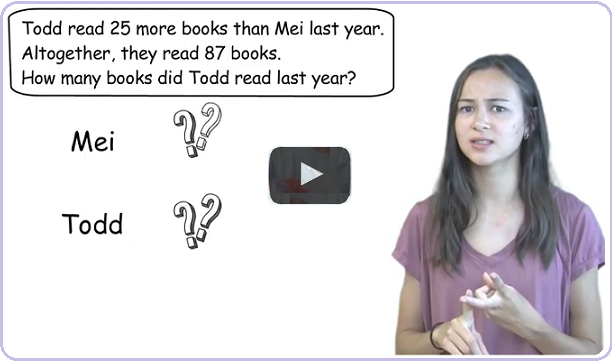
|
Draw a picture/diagram II:
|
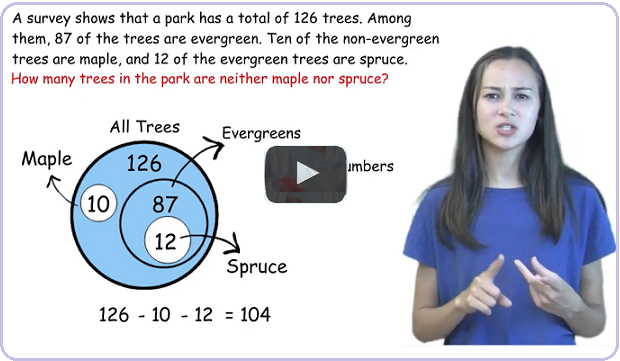
|
Draw a picture/diagram III:
use overlapping circles to show groups of
objects with shared elements.
|

|
The problem:
Audrey has 3 different flowers and 2 different vases. How many different ways can Audrey put all 3 flowers into 2 vases so that each vase has at least one flower?
[Source: NLMC Fall 2014 Grade 4] |
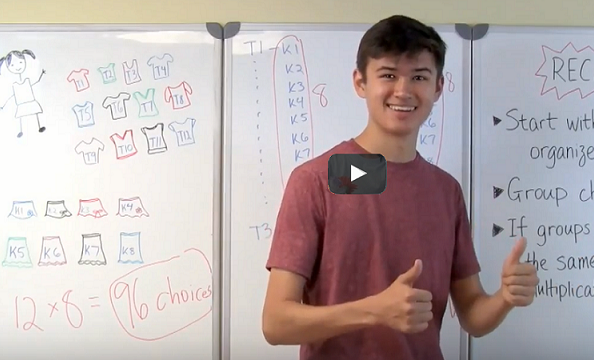
|
The problem: Yang's sister has 12 shirts and 8 skirts. How many different outfits can she have with 1 shirt and 1 skirt? |
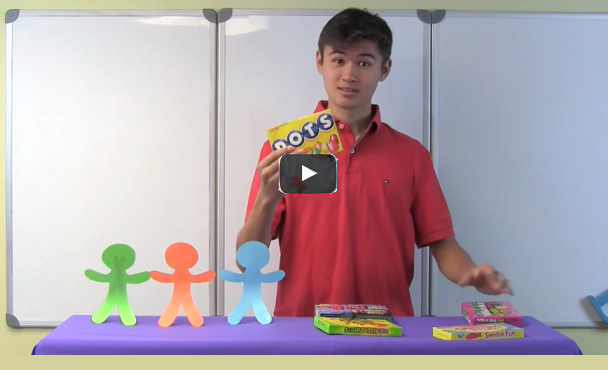
|
The problem:
Yang bought 5 boxes of candy. How many different ways can he award the candy
to his top 3 students if each gets one box of candy?
|
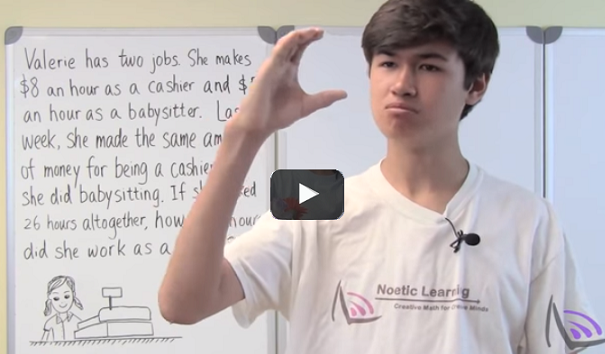
|
The problem:
Valeria has two jobs. She makes $8 an hour as a cashier and $5 an hour as a
babysitter. Last week, she made the same amount of money for being a cashier as she did
babysitting. If she worked 26 hours altogether, how many hours did she work as a cashier?
[Source: NLMC Fall 2010 Grade 5] |
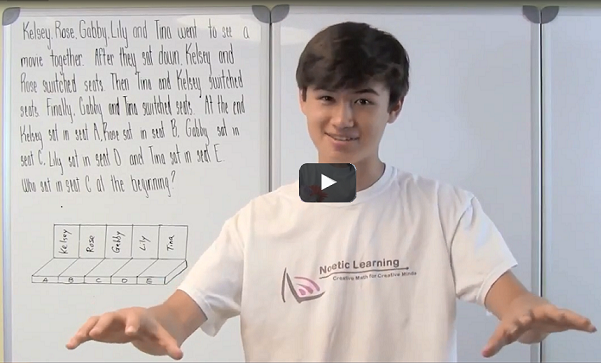
|
The problem:
Kelsey, Rose, Gabby, Lily and Tina went to a movie together. After they sat down, Kelsey and Rose switched seats. Then Tina and Kelsey switched seats. Finally, Gabby and Tina switched seats. At the end Kelsey sat in seat A, Rose sat in seat B, Gabby sat in seat C, Lily sat in seat D and Tina sat in seat E. Who sat in seat C at the beginning?
[Source: NLMC Spring 2015 Grade 4] |
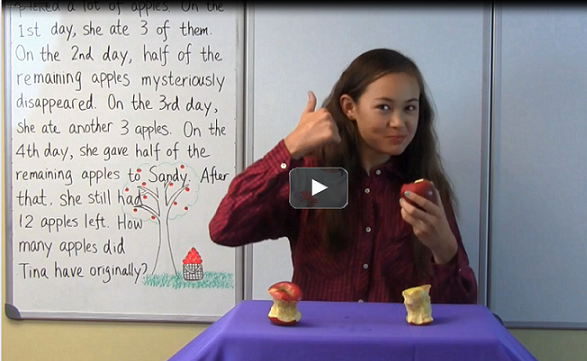
|
The problem:
Tina went apple picking. She picked a lot of apples. On the first day she ate 3 of them.
On the second day half of the remaining apples mysteriously disappeared. On the third day she ate another 3 apples.
On the fourth day she gave half of the remaining apples to her friend Sandy. She still had 12 apples left after that. How many apples did Tina have originally? ?
[Source: NLMC Fall 2012 Grade 6] |
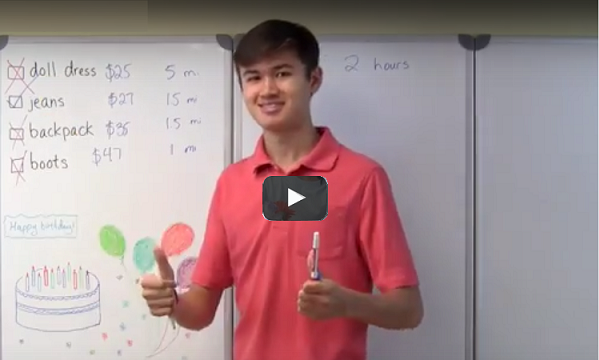
|
The problem:
With budget and time limitations, what present can Yang get for his sister?
|
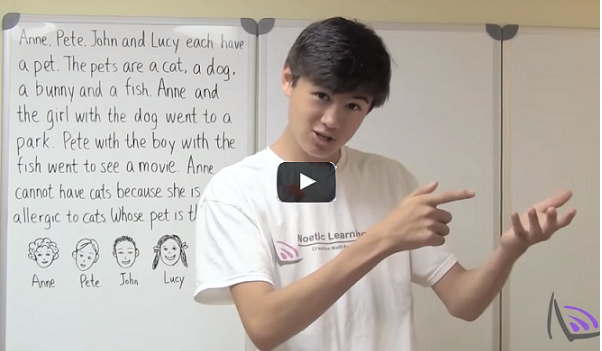
|
The problem:
Anne, Pete, John and Lucy each have a pet. The pets are a cat, a dog, a bunny
and a fish. Anne and the girl with the dog went to a park. Pete and the boy with
the fish went to see a movie. Anne cannot have cats because she is allergic to cats.
Whose pet is the cat? [Source: NLMC Spring 2011 Grade 5] |
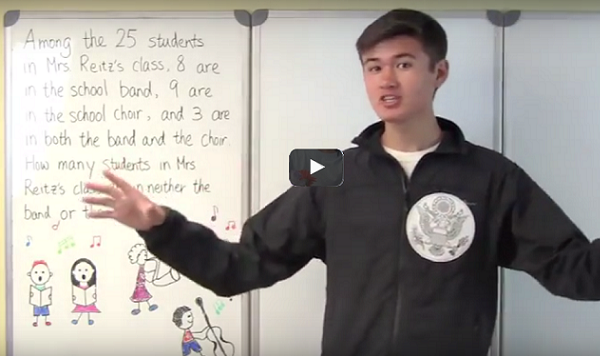
|
The problem:
Among the 25 students in Mrs. Reitz s class, 8 are in the school band, 9 are in
the school choir, and 3 are in both the band and the choir. How many students in
Mrs. Reitz s class are in neither the band nor the choir?
[Source: NLMC Spring 2012 Grade 5] |

|
The problem:
A neighborhood has a total of 233 houses. Among them, 158 houses have basketball hoops, 64 houses have swimming pools, and 18 houses have both. How many houses in this neighborhood have neither a basketball hoop nor a swimming pool?
[Source: NLMC Spring 2014 Grade 4] |
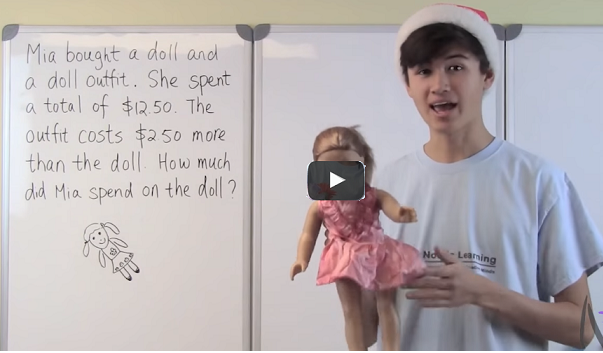
|
The problem:
Mia bought a doll and a doll outfit for $12.50. The outfit costs $2.50 more than
the doll. How much did Mia spend on the doll?
[Source: NLMC Fall 2011 Grade 5] |
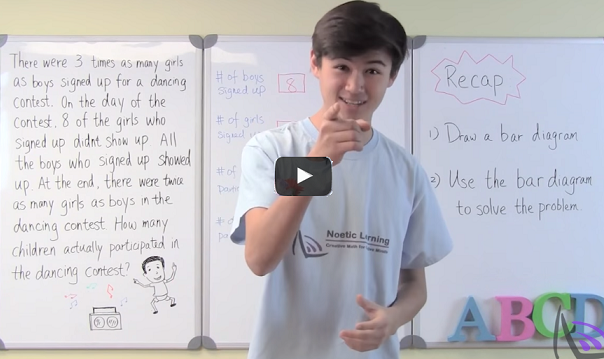
|
The problem:
There were 3 times as many girls as boys signed up for a dancing competition. On
the day of the competition, 8 girls who signed up for the competition didn t show up,
but all boys signed up for the competition showed up. At the end, there were twice as
many girls as boys in the dancing competition. How many students actually
participated in the dancing competition?
[Source: NLMC Spring 2010 Grade 5] |

|
The problem:
At the beginning of the summer, Lisa and Tony had a total of $800 in their
savings accounts. During the summer, Lisa spent 1/3 of her savings but didn t make
any money. During the same summer, Tony didn t spend any of his savings and was
able to add an additional $100 into his savings. At the end of the summer, Tony had
exactly the same amount of savings as Lisa. How much savings did Tony have at the
beginning of the summer?
[Source: NLMC Spring 2013 Grade 6] |
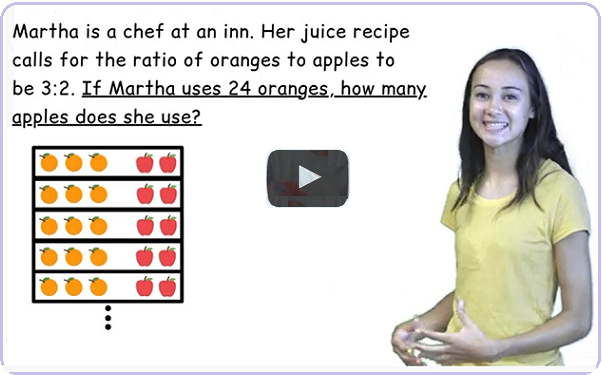
|
This video introduces the concept of
ratios to young students. It teaches students how to use the given ratio
relationship to find fraction relationships among group of objects.
|
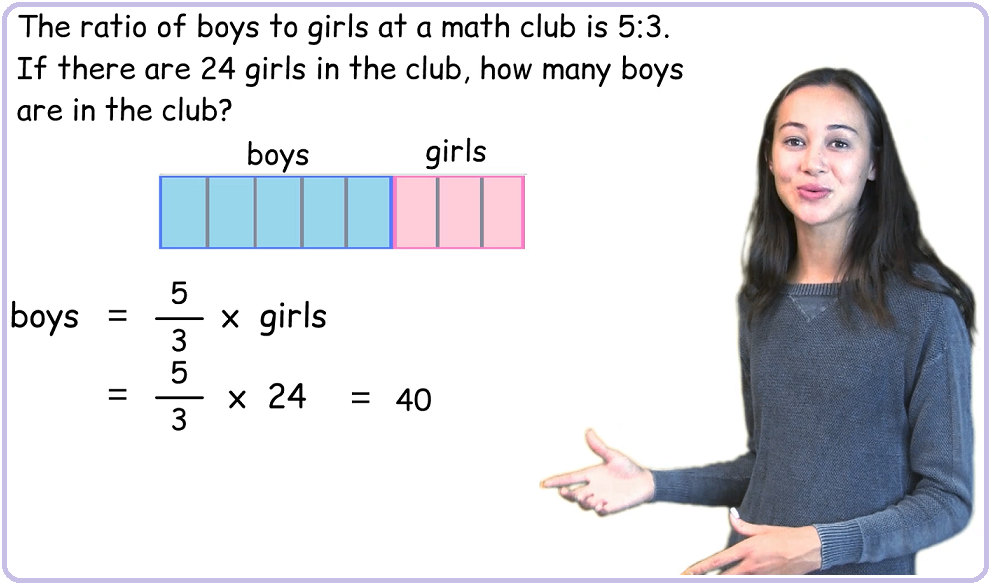
|
This video shows students how to use bar
diagrams to represent ratios and solve ratio problems.
|
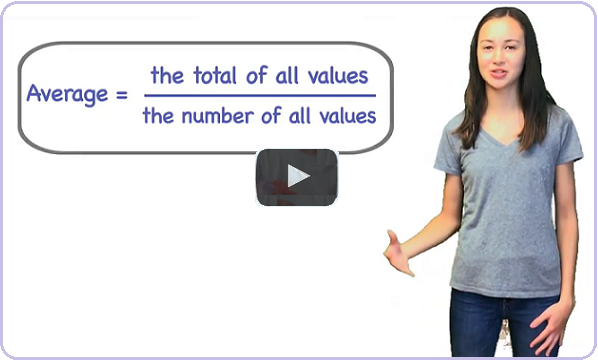
|
What is mean? This video helps students
visualize average/mean.
|

|
This video shows how to find average using
both mathematical definition and visual intuitive even-out method.
|

|
Yang finds a new way to solve permutation and combinations problem. For students grades 6 - 9.
|